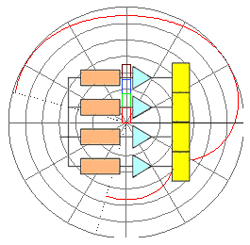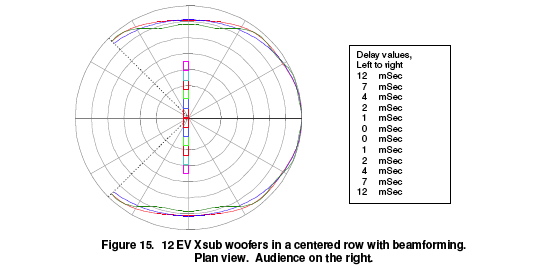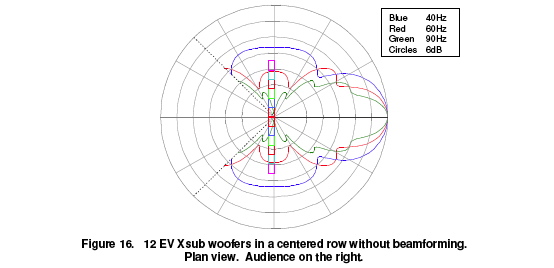
Large Central Stacks
In large venues and for outdoor stages it is often convenient to stack subwoofers in a continuous line across the front of the stage.
If beamforming delays are used with such clusters, the results can be excellent. Figure 15 shows the directivity of a row of 12 EV Xsub woofers with optimized delays.
Figure 15 illustrates a subtle beamforming detail that’s worth keeping in mind.
If you look at the table of delay values, you’ll notice that they’re not in equal steps – the steps get progressively larger at the ends of the array.
This is typical. When you do your own beamforming designs (using LAPS or some other modeling tool), you’ll probably notice that larger delay steps at the ends of the array give better results in both aiming and beam-broadening applications.

Figure 16 shows the pattern of the same array as in Figure 15, but with no beamforming applied. The coverage angle is narrow and more frequency-dependent.
Such arrays can be useful for covering long, narrow venues (parade routes, for instance), but for normal concerts the beamformed solution shown in Figure 15 would be preferred.

This is the second part of our series focusing on subwoofers. This is the second part of our series focusing on subwoofers. The first and third parts are available here and here.
Jeff Berryman served as the director of Jasonaudio, a touring sound company based in Canada, and is a senior scientist with Electro-Voice.
Related Articles by Jeff Berryman:
What Really Defines Good Bass In Sound Reinforcement?
Discussion & Analysis Of A Variety Of Bass Coverage Patterns
